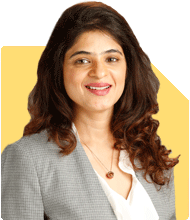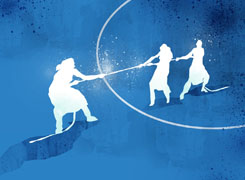I am 35 years old. My wife is homemaker. Currently receiving salary of 1.75 lakh / month. My monthly expenses are around 40k. I have no any debt and owning a house. I have 24lakh in ppf. Around 10 lakh in equity+mutual fund. NPS 5 lakh and 5 lakh in PF. I am currently investigating 40k / month in MF. And 10k nps and 15k in VPF. I have 5 lakh FD as emergency fund. I have 30 lakh gifted to father where he investmented in Senior Citizen Scheme, it gives 20k / month. I have personal 2cr term insurance and 5 lakh family health insurance. I have some ancestral property which is generating low rental income. It's cost are around 25 lakh and rental / 7k month I want to generate corpus of 7 cr by the age of 45 for retirement purpose. Is it enough? And what should be strategy. Also need an opinion about should I sale that property and invest in high return investment model ?
Ans: You’re doing well financially, and your goal of accumulating Rs 7 crores by age 45 is both ambitious and commendable. Given your current savings and investments, you’re on the right path. Let's break down a comprehensive strategy to achieve your retirement goal.
Understanding Your Financial Landscape
First, let's appreciate the strong foundation you've built. Here’s a snapshot of your current financial situation:
Monthly Income and Expenses:
Income: Rs 1.75 lakhs per month.
Expenses: Rs 40,000 per month.
Surplus: Rs 1.35 lakhs per month.
Current Investments and Assets:
PPF: Rs 24 lakhs.
Equity and Mutual Funds: Rs 10 lakhs.
NPS: Rs 5 lakhs.
PF: Rs 5 lakhs.
FD (Emergency Fund): Rs 5 lakhs.
Ancestral Property: Rs 25 lakhs, generating Rs 7,000 monthly rental income.
Gifts to Father: Rs 30 lakhs, invested in a Senior Citizen Scheme, yielding Rs 20,000 monthly.
Insurance:
Term Insurance: Rs 2 crores.
Health Insurance: Rs 5 lakhs for family coverage.
Monthly Investments:
Mutual Funds (SIP): Rs 40,000.
NPS: Rs 10,000.
VPF: Rs 15,000.
You’ve done a fantastic job of managing your finances. You have a solid income, controlled expenses, and a diversified investment portfolio. Now, let's explore how to enhance and optimize your strategy to reach the Rs 7 crore target by 45.
Strengthening Your Investment Strategy
Increasing Mutual Fund Investments
Mutual funds are crucial for your wealth-building strategy. Given your goal and the 10-year timeline, let’s focus on how you can leverage mutual funds more effectively.
Equity Mutual Funds:
Equity funds invest in stocks and have the potential for high returns. They are ideal for long-term goals like retirement. Here’s how you can diversify within equity funds:
Large-Cap Funds: Invest in large, established companies. They are relatively stable and less volatile.
Mid-Cap Funds: Invest in medium-sized companies. They offer higher growth potential but come with more risk.
Small-Cap Funds: Invest in smaller companies. They have the highest growth potential but are also the most volatile.
Debt Mutual Funds:
Debt funds are less risky and invest in fixed-income securities like bonds. They provide stable returns and are useful for diversifying your portfolio.
Short-Term Debt Funds: These are less sensitive to interest rate changes and are suitable for conservative investors.
Long-Term Debt Funds: These can provide higher returns but are more sensitive to interest rate changes.
Hybrid Mutual Funds:
Hybrid funds combine equity and debt in one portfolio. They offer a balanced approach and are suitable for moderate risk-takers.
Aggressive Hybrid Funds: Invest more in equity and less in debt, offering higher growth potential with moderate risk.
Conservative Hybrid Funds: Invest more in debt and less in equity, providing stability with moderate growth.
Action Plan:
Increase your monthly SIPs in equity mutual funds. Aim to diversify across large-cap, mid-cap, and small-cap funds.
Consider adding debt funds to your portfolio to balance risk and provide stability.
Review your mutual fund portfolio semi-annually to ensure it aligns with your goals and market conditions.
The Power of Compounding
Compounding allows your investment returns to generate more returns. The longer you stay invested, the more powerful the compounding effect.
For instance, if your mutual fund investments grow at an annual rate of 12%, your Rs 40,000 monthly SIP can grow significantly over the next 10 years. Increasing your SIP amount will further enhance this growth due to the compounding effect.
Regular Portfolio Review and Rebalancing
Monitoring and adjusting your portfolio is crucial. Market conditions change, and so do your financial needs and goals.
Portfolio Review:
Semi-Annual Reviews: Check your investment performance and ensure it aligns with your goals.
Annual Rebalancing: Adjust your asset allocation to maintain your desired risk level. For example, if equity funds outperform and exceed your target allocation, sell some equity and buy more debt or other asset classes.
Market Monitoring: Stay updated on market trends and economic factors that may affect your investments. This helps in making informed decisions.
Action Plan:
Set a schedule for semi-annual portfolio reviews.
Plan for annual rebalancing to maintain your desired asset mix.
Stay informed about market trends and adjust your strategy accordingly.
Maximizing Tax-Advantaged Investments
You’re already investing in tax-saving instruments like PPF and NPS. Let’s explore how to optimize these for maximum benefit.
PPF (Public Provident Fund):
PPF is a safe, tax-free investment. It offers fixed returns and the interest earned is tax-free. Continue maximizing your annual contributions up to the limit of Rs 1.5 lakhs under Section 80C.
NPS (National Pension System):
NPS is an excellent tool for long-term retirement savings. It offers tax deductions under Section 80C and an additional Rs 50,000 under Section 80CCD(1B).
VPF (Voluntary Provident Fund):
VPF is another great option for tax-free returns. Your Rs 15,000 monthly contribution here complements your other retirement savings.
ELSS (Equity Linked Savings Scheme):
Consider adding ELSS funds to your portfolio. They provide tax benefits under Section 80C and have the potential for higher returns due to their equity exposure.
Action Plan:
Maximize contributions to PPF and NPS to take full advantage of tax benefits.
Continue with your VPF contributions to enhance your retirement corpus.
Explore investing in ELSS for additional tax-saving and growth opportunities.
Evaluating the Role of NPS
Your Rs 5 lakh in NPS and Rs 10,000 monthly contributions are strategic for long-term growth. NPS combines equity and debt, making it suitable for retirement planning.
Advantages of NPS:
Tax Benefits: Contributions are deductible under Section 80C and Section 80CCD(1B).
Low-Cost: NPS has lower management fees compared to other retirement funds.
Market-Linked Growth: Investments can grow significantly with market performance.
NPS Allocation:
Equity: Can provide high returns over the long term. NPS allows up to 75% allocation in equity.
Corporate Bonds: Offer moderate returns with lower risk.
Government Bonds: Provide stability and safety.
Action Plan:
Consider increasing your monthly NPS contributions for additional tax benefits and growth.
Review and adjust your NPS asset allocation to balance growth and risk.
Maintaining a Solid Emergency Fund
Your Rs 5 lakh emergency fund in FD is well-placed. It provides liquidity and safety for unforeseen expenses. Let’s ensure it remains sufficient and accessible.
Emergency Fund Guidelines:
Size: Should cover at least 6 to 12 months of living expenses. Given your monthly expenses of Rs 40,000, a Rs 5 lakh fund is adequate.
Accessibility: Keep it in liquid or easily accessible investments, such as a high-interest savings account or liquid mutual funds.
Action Plan:
Periodically review your emergency fund to ensure it meets your needs.
Consider increasing it if your expenses rise or you face significant financial obligations.
Assessing the Ancestral Property
Your ancestral property is valued at Rs 25 lakhs and generates Rs 7,000 monthly rental income. Let’s evaluate whether to keep or sell this asset.
Rental Yield Analysis:
The rental yield is currently 3.36% annually (Rs 7,000 x 12 months = Rs 84,000 per year). This is relatively low compared to other potential investments.
Real estate often involves maintenance costs and can be illiquid, making it less flexible.
Selling the Property:
Selling could free up Rs 25 lakhs for higher-return investments like mutual funds. This could significantly boost your wealth-building efforts.
Consider the tax implications and costs associated with selling property.
Action Plan:
Evaluate the pros and cons of retaining versus selling the property.
If selling, plan to reinvest the proceeds in growth-oriented assets.
Insurance and Health Coverage
Your Rs 2 crore term insurance provides substantial financial protection for your family. Ensure that the coverage remains adequate as your financial needs evolve.
Health Insurance:
Your Rs 5 lakh family health insurance is crucial. Regularly review the coverage to ensure it meets your healthcare needs.
Consider adding a top-up plan if you anticipate higher medical expenses.
Action Plan:
Review your term insurance periodically to ensure it covers your financial liabilities and family’s needs.
Assess your health insurance coverage and add top-up plans if necessary.
Boosting Retirement Savings
To reach your Rs 7 crore goal by 45, a combination of higher savings and smart investments is key. Let’s explore strategies to enhance your retirement savings.
Increasing SIPs:
Consider increasing your monthly SIPs in mutual funds. Given your Rs 1.35 lakh monthly surplus, redirecting more towards SIPs can accelerate your savings growth.
Exploring Higher-Yield Investments:
Focus on equity mutual funds and other growth-oriented investments to leverage market potential and compounding.
Action Plan:
Gradually increase your SIP contributions in alignment with your income and financial goals.
Continuously seek higher-yielding investments that align with your risk tolerance and time horizon.
The Benefits of Actively Managed Funds
Actively managed mutual funds have the potential to outperform the market, especially during volatile conditions. They involve professional management and strategic investment decisions.
Disadvantages of Index Funds:
Lack of Flexibility: Index funds passively track the market and cannot adapt to changing conditions.
Potential for Lower Returns: During bear markets, index funds may suffer as they mirror overall market performance.
Advantages of Actively Managed Funds:
Professional Management: Fund managers actively select securities to outperform the market.
Strategic Allocation: They can adjust asset allocation based on market conditions and opportunities.
Action Plan:
Continue focusing on actively managed mutual funds for potential higher returns.
Avoid relying solely on index funds, especially given your ambitious Rs 7 crore goal.
Avoiding Direct Funds
Direct mutual funds have lower expense ratios but require individual management and decision-making. Investing through a Certified Financial Planner (CFP) offers professional guidance and aligns better with your financial goals.
Disadvantages of Direct Funds:
Self-Management: Requires time and expertise to manage investments effectively.
Risk of Poor Decisions: Without professional advice, you might make suboptimal investment choices.
Advantages of Regular Funds with CFP:
Professional Guidance: A CFP provides expert advice and helps align investments with your goals.
Comprehensive Planning: CFPs offer holistic financial planning, including risk management and tax strategies.
Action Plan:
Continue investing in regular funds with the guidance of a CFP.
Avoid direct funds to benefit from professional management and strategic planning.
Exploring Fixed Deposits and Bonds
Fixed deposits (FDs) and bonds can play a complementary role in your investment portfolio. They offer safety and stability, which are essential for balancing riskier investments like equity funds.
Fixed Deposits (FDs):
Safety: FDs provide capital protection and guaranteed returns.
Liquidity: They can be easily liquidated in times of need.
Bonds:
Fixed Income: Bonds offer regular interest payments, adding a stable income stream.
Lower Risk: They are less volatile compared to equities.
Action Plan:
Maintain a portion of your portfolio in FDs and bonds for stability and diversification.
Ensure that these investments align with your overall risk tolerance and financial goals.
Final Insights
Your goal of accumulating Rs 7 crores by 45 is challenging but achievable. Your current financial status is strong, and with strategic enhancements, you can reach this milestone.
Key Takeaways:
Increase mutual fund SIPs, focusing on equity funds for higher growth.
Leverage tax-advantaged investments like PPF and NPS for maximum benefits.
Consider selling the ancestral property and reinvesting in growth-oriented assets.
Regularly review and rebalance your portfolio to maintain alignment with your goals.
Embrace the power of compounding and stay disciplined in your investment approach.
Stay committed to your plan, monitor your progress, and adjust your strategy as needed. Your financial discipline and strategic planning will guide you to your retirement goal.
Best Regards,
K. Ramalingam, MBA, CFP,
Chief Financial Planner,
www.holisticinvestment.in



























